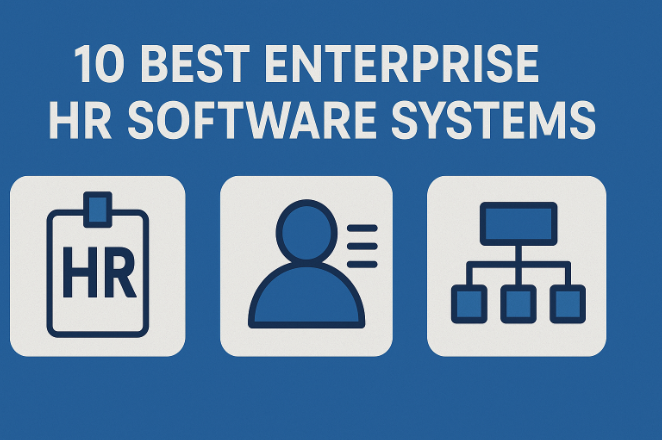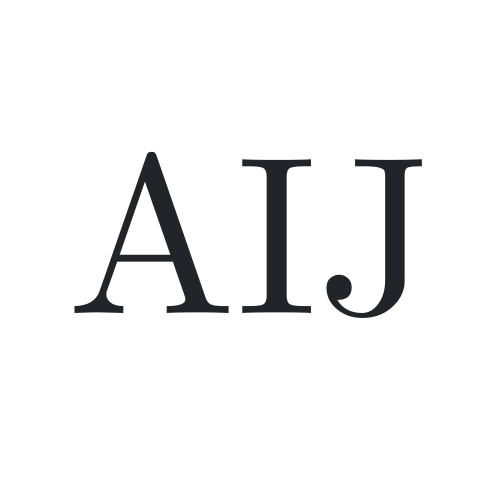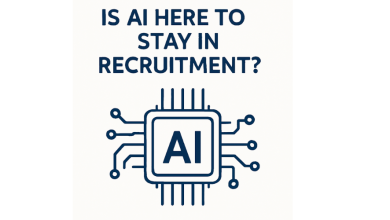
Modern enterprises can’t run people operations on spreadsheets and disconnected tools anymore. Distributed workforces, complex compliance requirements, skills-based staffing, and data-driven planning all demand a single system of record that unifies HR, payroll, time, talent, and analytics. Enterprise HR software delivers exactly that: standardized processes, strong controls, and real-time insights at global scale – without sacrificing employee experience.
In large organizations, HR doesn’t live in a silo; it touches sales capacity planning, finance forecasts, IT access governance, and legal compliance. That’s why many enterprises now evaluate crm hr software capabilities alongside traditional HCM features – seeking platforms that connect people data with customer, revenue, and project workflows to close the loop between headcount, productivity, and business outcomes.
What is Enterprise HR Software?
Enterprise HR software (often called HCM – Human Capital Management – platforms) is an integrated suite that manages the full employee lifecycle across multiple geographies and entities. At a minimum, these systems centralize core HR data (the HRIS), but leading enterprise platforms extend further to include:
- Core HR & Organization Management: Single source of truth for worker profiles, positions, job architecture, documents, and organization hierarchies; robust role-based access controls and audit logs.
- Global Payroll & Time: Multi-country payroll engines or native connectors to local providers; time & attendance with scheduling, accruals, overtime, compliance rules, and union/labor support.
- Talent Acquisition (ATS): Requisition management, job postings, internal mobility, structured interviews, assessments, offer management, compliance (EEO/OFCCP, GDPR), and recruiter analytics.
- Onboarding & Offboarding: Provisioning workflows spanning HR, IT, and Facilities; checklists, e-signatures, asset tracking, and Day-1 readiness dashboards.
- Performance & Goals: Continuous feedback, OKRs/MBOs, reviews, calibration, and talent mapping (9-box, succession).
- Learning & Skills: LMS/LXP capabilities, content libraries, certifications, and skills taxonomies that power mobility and workforce planning.
- Compensation & Benefits: Salary structures, merit cycles, variable pay, equity planning, and multi-country benefits enrollment.
- Workforce Planning & Analytics: Headcount plans, scenario modeling, position budgeting, dashboards, and data governance with extensive reporting APIs.
- Compliance & Security: Audit trails, encryption, DLP, SSO/SCIM, fine-grained roles, and privacy features aligned to GDPR, SOC 2, ISO 27001, HIPAA (where applicable).
- Ecosystem & Extensibility: Prebuilt connectors (ERP, finance, identity, messaging), low-code workflow builders, REST APIs, and marketplace apps.
For enterprises, the non-functional requirements are as important as features: scalability, uptime SLAs, globalization (localizations, calendars, tax rules), configurability (without custom code), and governance (segregation of duties, auditability).
Top 10 Enterprise HR Software Systems
Below are ten strong options for large organizations, each with distinctive strengths. The right choice depends on your operating model, geographic footprint, IT ecosystem, and the maturity of your HR processes.
1) Bitrix24
Best for: Enterprises and large divisions that want HR + collaboration + CRM under one umbrella with strong workflow automation.
Why enterprises choose it: Bitrix24 uniquely blends HRIS, intranet/knowledge base, task/project management, document management, and CRM – useful for organizations seeking to link people operations to revenue-driving teams. It can serve as crm hr software for organizations that want recruiting pipelines, onboarding tasks, and performance processes to intersect with sales, service, and project delivery.
Standouts:
- Intranet & Collaboration: Workgroups, knowledge bases, and chat keep teams aligned.
- HR Tools: Employee directory, absence charts, time tracking, onboarding checklists, goals/performance, and approvals.
- CRM + Automation: End-to-end automation, custom workflows, and low-code process builders that join HR and customer-facing processes.
- Telephony & Contact Center: Omnichannel routing with analytics, helpful for HR service desks.
Considerations: Validate enterprise requirements – SSO/SCIM, data residency, audit logging, and integration depth with finance/payroll if using specialized providers.
2) SAP SuccessFactors
Best for: Enterprises aligned to the SAP ecosystem or with complex global HR processes.
Why enterprises choose it: Deep localization coverage and proven scale. The suite spans core HR (Employee Central), talent, learning, and analytics, with tight integration to SAP ERP/S/4HANA and SAP Payroll.
Standouts: Globalization, compliance, and the breadth of partner add-ons.
Considerations: Integration design is critical in mixed-vendor landscapes; UI/UX varies by module lineage.
3) Oracle Fusion Cloud HCM
Best for: Organizations standardizing on Oracle cloud (ERP, EPM) and seeking end-to-end process automation.
Why enterprises choose it: Native alignment with Oracle ERP for headcount planning, project cost allocation, and financial close.
Standouts: Global HR, payroll options, advanced security, and strong compensation functionality.
Considerations: Requires experienced implementation partners; governance and change control are essential.
4) UKG Pro (Ultimate Kronos Group)
Best for: Large, hourly-heavy workforces needing robust time, scheduling, and employee experience.
Why enterprises choose it: UKG’s heritage in workforce management (Kronos) plus HCM (UltiPro) creates a strong combination for shift-based operations in retail, manufacturing, and healthcare.
Standouts: Time/attendance, scheduling, and compliance rules; employee sentiment tools.
Considerations: Evaluate global payroll strategies and connectors for non-US markets.
5) Ceridian Dayforce
Best for: Enterprises prioritizing pay accuracy, complex time rules, and continuous calculation.
Why enterprises choose it: A single database for HR, payroll, time, and benefits reduces reconciliation overhead. Continuous calculation helps manage mid-period changes and reduces payroll leakage.
Standouts: Strong compliance features; useful for North American operations with global extensions.
Considerations: Confirm country coverage and local payroll partners for your footprint.
6) ADP Vantage HCM (with ADP Global Payroll)
Best for: Multi-country payroll at scale with enterprise-grade compliance and services.
Why enterprises choose it: ADP’s global payroll footprint and BPO options pair well with enterprises that want to outsource complexity while maintaining robust controls.
Standouts: Payroll reliability, statutory reporting, and service infrastructure.
Considerations: Talent modules are solid but not as feature-rich as best-of-breed; integration design matters.
7) Cornerstone (HR + Talent Suite)
Best for: Enterprises prioritizing learning, skills, and talent mobility combined with core HR.
Why enterprises choose it: Cornerstone’s leadership in learning/LXP and skills intelligence makes it attractive for skills-based transformation and regulated learning.
Standouts: Content, compliance training, skills mapping, and talent marketplace.
Considerations: Core HR depth may differ from traditional HCMs; validate payroll/time strategy.
8) Microsoft Dynamics 365 Human Resources
Best for: Organizations already invested in Microsoft 365, Azure, and Dynamics 365.
Why enterprises choose it: Familiar security, identity, and analytics tooling (Entra ID/SSO, Power Platform, Power BI). Tight integration with Dynamics 365 Finance & Operations streamlines workforce costing and approvals.
Standouts: Low-code extensibility (Power Automate) and the broader Microsoft ecosystem.
Considerations: Confirm roadmap alignment and partner expertise for complex, global deployments.
9) Workday HCM
Best for: Global organizations seeking a unified finance + HR + planning core.
Why enterprises choose it: Workday’s object model is consistent across HR, finance, and planning, enabling powerful cross-domain analytics (e.g., workforce cost by product line). Its skills cloud, talent marketplace, and native planning (Workday Adaptive Planning) support skills-based workforce strategies.
Standouts: Rich role-based security, configurable business processes, continuous performance, and strong reporting.
Considerations: Premium pricing and longer implementations; requires disciplined governance to avoid configuration sprawl.
10) Rippling Unity + HR Cloud
Best for: High-growth or multi-entity enterprises that want a single platform to manage HR, IT, and finance primitives (users, devices, permissions) alongside HR.
Why enterprises choose it: Strong automation across onboarding, app provisioning, device management, and payroll. Good for organizations emphasizing IT-HR convergence and rapid M&A integration.
Standouts: Unified data graph, policy automation, and device/app provisioning for Day-1 productivity.
Considerations: Validate global payroll/benefits coverage per country; perform diligence on data sovereignty needs.
How to Choose the Right Enterprise HR Software
Enterprises rarely buy software; they buy operating models. Use the following lens to de-risk your selection and maximize value:
1) Map Business Outcomes First
Tie the initiative to measurable goals: reduce time-to-hire by 30%, improve first-90-day productivity, cut payroll errors by 80%, or increase internal mobility fill rate. Translate outcomes into requirements and KPIs that your platform must enable.
2) Define the Global Operating Model
- Entity & Country Scope: Which countries are in phase 1 vs. later waves? What localizations, calendars, and statutory reports are required?
- Org Model & Job Architecture: Standardize job families, levels, and skills taxonomy to power analytics and mobility.
- Shared Services vs. Local Autonomy: Decide which processes are globally standardized vs. locally configurable.
3) Prioritize Security & Compliance
- Identity and Access: Entra ID/Okta SSO, SCIM user lifecycle, MFA, conditional access.
- Data Protection: Encryption at rest/in transit, key management, DLP, field-level permissions, masking, and audit trails.
- Certifications: SOC 2 Type II, ISO 27001, ISO 27701, GDPR tooling (DPIA, DSR workflows), HIPAA (if applicable).
- Regional Requirements: Data residency in EU/UK, country-specific payroll controls, union agreements, and working time directives.
4) Evaluate Integration Fabric
- ERP/Finance: Headcount plan vs. actuals, cost centers, projects, GL, and close processes.
- Identity & ITSM: Automated provisioning (HR → IDP → MDM/ITSM), hardware/software requests, and offboarding.
- CRM & PSA: For services and revenue teams, sync roles, quotas, billable rates, and project staffing – this is where platforms like Bitrix24 shine with native CRM plus HR workflows.
- Data Platform: Event streams, webhooks, and APIs to feed your lakehouse for advanced analytics.
5) Measure TCO and Time-to-Value
- Licensing & Modules: Per-employee pricing across HR core, payroll, time, talent, learning, analytics.
- Implementation & Change Management: Partner costs, data migration, process re-design, localization, and testing.
- Run Costs: Admin time, integration maintenance, and release management.
Model a three-year TCO and compare against quantified benefits (labor hours saved, payroll leakage prevented, reduced agency fees, lower attrition).
6) Verify Configurability Without Chaos
Your HR platform should let you adapt workflows without relying on custom code – but with guardrails:
- Versioned workflows and approvals
- Segregation of duties and role governance
- Sandboxes with promotion paths to production
- Automated tests for critical processes (payroll, comp cycles)
7) Demand Evidence for Scalability & Support
Ask vendors for concrete proof: reference customers in your industry/size, uptime SLAs, performance benchmarks during peak events (e.g., merit cycles), and the vendor’s success framework (playbooks, admin academy, TAM/CSA support, release calendars).
8) Pilot with Real Processes
Run a limited pilot using your data: a hiring process in two countries, a payroll cycle, or a performance review. Measure admin effort, cycle times, and error rates. Include IT, Finance, and Legal in the evaluation to surface cross-functional needs early.
FAQs
What’s the difference between HRIS, HCM, and HRMS?
These terms are often used interchangeably. HRIS traditionally refers to core employee data and records management. HCM/HRMS generally describes the broader suite – core HR plus payroll, time, talent, learning, and analytics. In enterprise contexts, focus less on labels and more on capability coverage, integration quality, and governance.
Can one vendor handle global payroll in every country?
Rarely. Even leading vendors use a mix of native engines (for key markets) and certified partners for others. If you have 30+ countries, expect a hub-and-spoke model: a central HCM with connectors to local payroll providers and a consolidated reporting layer.
How do enterprise HR platforms support skills-based organizations?
Through skills taxonomies, proficiency models, and AI-assisted inference from resumes, profiles, courses, and projects. Platforms map skills to roles, learning paths, and internal gigs – powering mobility and workforce planning. Cornerstone, Workday, and Oracle are strong here, with others rapidly expanding skill graphs.
Is it realistic to connect HR with CRM and project delivery?
Yes – and for services-led enterprises, it’s a competitive advantage. Platforms like Bitrix24 combine HR, collaboration, and CRM so onboarding, role changes, and certifications directly inform sales staffing, project assignment, and customer SLAs. Alternatively, integrate your HCM with Salesforce, Dynamics, or PSA tools through APIs and iPaaS.
How long does an enterprise HCM rollout take?
Timelines vary by scope, countries, and data quality. A core HR + payroll deployment for a single region can land in a few months; multi-country, full-suite rollouts commonly span 9–18 months with phased waves. Focus on global design first, then execute country waves with a repeatable playbook.
What’s the biggest hidden cost to watch?
Underestimating data migration and cleansing, plus ongoing integration maintenance. Invest early in a canonical job architecture, location hierarchy, and clean employee IDs. Automate regression testing around payroll and comp processes to avoid post-go-live surprises.
How do we measure ROI after go-live?
Tie metrics to the original business case: reduction in time-to-hire/onboard, payroll error rate, overtime leakage, learning compliance completion, internal fill rates, and manager self-service adoption. Translate savings into labor hours reclaimed and cash cost avoided, then compare to the three-year TCO.
We have unionized and hourly workforces – what should we prioritize?
Look for advanced time & scheduling, rule engines for overtime and premiums, seniority bidding, meal/rest compliance, and strong grievance tracking. UKG and Dayforce are frequently shortlisted for these needs; verify your specific contracts and local regulations.
How do we maintain governance as we scale configuration?
Adopt a center-led model with local champions. Use sandboxes, change advisory boards, release calendars, and automated tests. Enforce least-privilege access, approval matrices, and audit reports. Document processes in a living runbook.
Is Bitrix24 suitable as our primary global HCM?
It depends on your requirements. Bitrix24 excels where HR processes intertwine with collaboration, projects, service desks, and CRM. For organizations needing deep, multi-country payroll or specialized compliance, Bitrix24 can serve as the collaboration/CRM/HR process hub alongside a dedicated payroll engine – connected via APIs and workflow automation.
Final Thoughts
Selecting enterprise HR software is fundamentally about aligning technology with your operating model and growth plans. Whether you standardize on a full-suite HCM (Workday, SAP, Oracle), optimize for hourly operations (UKG, Dayforce), leverage payroll scale (ADP), double down on learning and skills (Cornerstone), integrate tightly with Microsoft (Dynamics 365), or unify HR with CRM and collaboration (Bitrix24), the winning strategy is the same:
- define outcomes, 2) codify your global design, 3) integrate securely, and 4) instrument the system for measurable ROI. Do that – and your HR platform becomes a strategic engine for productivity, compliance, and sustainable growth.


